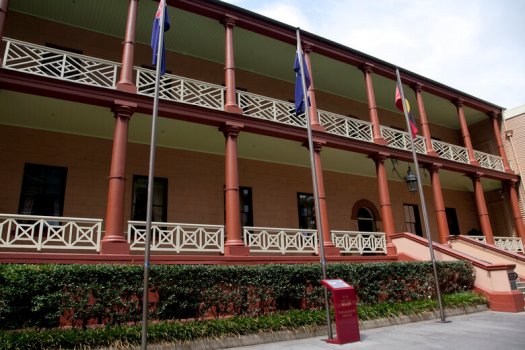
The way local government financial streams are structured means that, contrary to conventional wisdom, population growth is making councils less financially sustainable, a researcher says.

“There is a huge response in financial sustainability as population grows, and it’s a negative response,” University of Newcastle Professor of Local Government Economics Joseph Drew told Government News during an interview to discuss his new study in the Australian Journal of Public Administration.
Professor Drew says public policy-makers have traditionally been big proponents of local government growth, and have used this position to justify amalgamation as a way of ‘growing out’ of financial distress.
But Professor Drew says his evidence shows revenue per person actually decreases in response to population growth, and “it seems that past policy advice of this kind has probably exacerbated financial sustainability problems”.
He argues that changes to local government taxation models, usage fees and Commonwealth grants are needed to mitigate this – but rate caps and bigger FAGs aren’t the way to go.
Growth negatively affects financial position
Professor Drew says the results of his study are backed up by yet-to-be published research based on financial sustainability metrics used by the NSW government.
“If you look at it, population size is negatively associated with financial sustainability statewide,” he says.
“So the bigger you are, the less sustainable you are by the NSW government’s own metrics. And that’s even more the case for rural councils. Our forthcoming paper shows that financial sustainability goes down with size. That’s just a fact.”
If revenue is going backwards it doesn’t matter what it’s going back by. You’re stuffed.
Professor Joseph Drew
His current study uses various modelling on ten years of data showing different figures, but one thing is constant – as population increases unit revenue goes down.
“If unit revenue’s going down you can’t possibly be getting more financially sustainable,” he tells Government News. “If revenue is going backwards it doesn’t matter what it’s going back by. You’re stuffed.”
Population growth good for federal, bad for local
Professor Drew says when you’re talking federal government, population growth is good. That’s because the federal government taxes people and the goods they buy. But local governments tax land, which doesn’t reflect population.
“Unit revenue doesn’t match growth because of the way revenue is gathered in the local government system,” he says.
Unit revenue doesn’t match growth because of the way revenue is gathered in the local government system.
“A big portion is rates, which is based on land value, not the number of people sitting on the land.
“The next big portion is fees and charges, and a lot of those aren’t based on the number of people. For example, we all pay the same rubbish bin charge whether you have four people in your house or one.
“A lot of our charges are per property, so they’re not going to react to population growth. And a lot of them are regulated.”
Instead, local governments should shift to usage charges wherever possible, Professor Drew says.
“For example, domestic waste collection ought to be charged according to both an access fee that covers the cost to pick up the bin as well as a weight or volume charge which would better reflect the cost to dispose of the material in landfill,” he says.
“Recent advances in technology mean that local governments can now more easily weigh and account for individual rubbish bins and doing so provides an example of how revenue might better capture organic growth.
“Other applications where technology might make usage charges more cost-effective include electronic water metering, electronic parking meters, and even tolls for convenient or heavily used local roads.”
FAGS not the answer
Then there’s Commonwealth Financial Assistance Grants, Professor Drew says, which are mainly based on need.
“So population increase won’t help you, unless the people coming in are in the lower social demographic areas,” he says.
That’s why he says simply increasing the FAGS bucket isn’t the answer, and insists councils are wasting time when when they lobby for it – especially considering it’s a losing battle against a federal budget already under pressure.
Rate caps encouraging ‘learned helplessness’
Another area councils are getting it wrong, according to Professor Drew, is by calling for higher rate caps.
“They want to increase the bucket, but that’s not going to happen,” he says. “They should be campaigning to have it allocated it on a uniform, robust and empirically defensible fashion.”
Relying on rates also facilitates ‘learned helplessness’, he says.
“It allows councils to say, ‘it’s not our fault, it’s rate capping’, so they don’t try as hard as they might.
“Rate capping isn’t the big terrible thing people make out, you can always apply for an exemption,” he says.
The amalgamation myth
Professor Drew says his findings go to the heart of the failed amalgamation experiment. He says his previous research has consistently shown that on average, NSW amalgamations resulted in costs going up 11 per cent, with staff costs climbing 15 per cent.
“Amalgamation didn’t make councils more financially sustainable,” he says. “It’s related to the same misconception that if we make these councils bigger, they’ll be more efficient, they’ll save money.
It’s related to the same misconception that if we make these councils bigger, they’ll be more efficient, they’ll save money. What if that’s wrong?
“What if that’s wrong? What if making councils bigger leads to diseconomies of scale, less transparecny, more middle management and senior management getting paid squillions more?
“If that’s the case, when you’re making things bigger you’re making everything worse.”
Professor Drew expects his research will come as a surprise to a lot of councils, but he says the findings need to be taken seriously, especially in light of the Covid-led domestic migration which has seen population in many regional LGAs swell.
“If matters are not redressed, then large-scale internal migration to rural and regional local government areas has the potential to intensify the fiscal stress already felt by many of these local governments,” he says.
Comment below to have your say on this story.
If you have a news story or tip-off, get in touch at editorial@governmentnews.com.au.
Sign up to the Government News newsletter



Comment: in some LGAs the NSW state government is taking more in Land Tax than Councils receive in rates. How could more of this tax be returned to Councils?
Can we see suggest reduction in Land Tax for property with low rental tenancies to improve affordability and expand number of affordable housing units?
And many institutions do not pay Council rates at all – private schools and some private hospitals, charity owned facilities etc. In particular, large private schools use considerable local resources.
With no disrespect to the professor, anyone with a passing interest in government has know all this political bunkum for years.
Populate or perish is, at best, a zero sum game for Councils and as his study shows, often worse.
The community may benefit from additional consumer spending and diversification in services provided with population growth but existing infrastructure and even new facilities will cost councils forever.
In the absence of increased income from other levels of government, reduced spending on infrastructure and services is the only option.
Sadly, most rural communities tend to pick up on making provisions for services and infrastructure that are supposed to be provided by State Government, with health being the biggest concern.
Many countries are undergoing middle-class growth, with the same effects as people moving from the cities to country areas. Hence, planning should always take place to grow the required infrastructure to meet the needs of the anticipated growth.
Roads, medical facilities, schools, etc, need constant and forward-thinking planning. If costs are an issue, raise your rates/ taxes or seek funding from the federal government. Ensure the required skills are in place to ensure planning meets expected growth targets. An example of planning that has been talked about and has yet to be advanced in the past is the current housing crisis across every state in Australia.
Have we got too many tiers of government? Is it time to dispense with local councils altogether and instead create more states? Of course the states would be much smaller in size, but they would be much easier to govern than the vast areas we have today. I feel part of the problem with providing appropriate infrastructure and services, particularly in the regions is that we have been travelling down the wrong path for way too long. If you look at other economies around the world, they worked out ages ago that dividing the areas that need to be governed into easily managed “chunks”, the less red tape is needed as the decisionmakers are already on the ground. But at the moment the bureaucrats are hundreds of miles away in “glass towers” with no clue about what they are supposed to be governing and that is why the states and territories are in such a mess.
As for revenue raising in the regions, the more decentralisation is embraced, the better. We desperately need population growth to save our rural and regional towns from dying out. And one way to do that is to offer government-built house and land packages at affordable prices on friendly repayment plans near the rail lines. But the government also needs to build banks of new shops and factory bays and lease them out at affordable rates. In other words local governments need to put on their entrepreneural hats and think “big”. And while all of this is happening the state government needs to start undoing the damage that was done when they closed down regional rail passenger services over 40 years ago and get them up and running again as a matter of urgency. Do all of the above and we would not have a problem with local councils running out of money. Instead they would be laughing all the way to the bank.